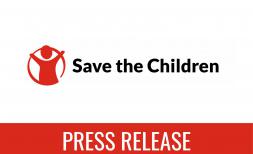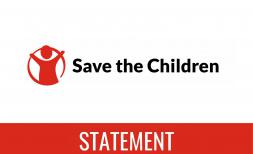TWO MIILLION CHILDREN UNABLE TO RETURN TO SCHOOL IN WEST AND CENTRAL AFRICA

More than 2 million children are unable to return to school due to ongoing security risks across the West and Central African region. An estimated 9,288 schools are closed and 44,000 teachers[i] will not be able to reach their classrooms, while schools are starting again.
In Burkina Faso, one of the affected countries, the rapid deterioration of the security situation has led to the closure of more than 2,024[ii] schools today, compared to 1284 in March of this year. Cameroon, Central Africa Republic, Chad, DRC, Mali, Niger, and Nigeria are facing similar challenges.
Across the region, and particularly in the central Sahel, education is increasingly targeted: schools are being attacked by armed groups, burnt or even occupied for military purposes or by internal displaced peoples. Children and teachers are being attacked on the way to school and at school.
Humanitarian operations are confronted with conflicts and insecurity, presenting challenges in providing much needed support to communities who face increasing violations.
With their education interrupted, children risk dropping out of school and being exposed to protection concerns such as recruitment into armed groups, violence, abuse, exploitation and gender-based violence. These risks are even further exacerbated for young girls, in times of crisis.
Studies conducted by Save the Children in the region show that even during crisis situations, the primary priority for children and youth is to return to school.
“I was afraid of losing my mother because I already had no father. The whole village was destroyed; I went to the village school which was also destroyed. When we came to this village, the principal of the school informed my uncle that I could continue school. This was good news because I love school and it is important to have an education. I have new friends with whom I have a good time. Later I want to become a minister.” Ibrahim*, 12 years old, Mali.
Most of these countries, affected by humanitarian crises, already have low levels of development and fragile education systems that are unable to adapt in times of crisis. Systemic solutions are urgently needed to ensure children can continue their learning, to prevent us losing another generation.
“Violent internal conflicts, insecurity, natural disasters, epidemics such as Ebola, are troubles that we regularly hear about. But do we ask ourselves what the consequences are for children and young people in the areas affected by these multiple crises?”, says Mr Philippe Adapoe Regional, Director of Save the Children for West and Central Africa."
Save the Children is calling for:
*Name changed for privacy reasons
Notes to editors:
- Save the Children champions the rights and interests of children worldwide, putting the most vulnerable children first. With 25,000 dedicated staff across 120 countries, we respond to major emergencies, deliver innovative development programmes, and ensure children's voices are heard through our campaigning to build a better future for and with children.
- According to official information – Minister in charge of education – in Burkina Faso, the number of internally displaced students amounts to 9514 on 19 September 2019 and they occupy 96 schools.
[i]https://www.humanitarianresponse.info/sites/www.humanitarianresponse.info/files/documents/files/wca_eie_dashboard_my_2019-06.08.19.pdf
[ii] Source : OCHA
[iii] http://www.protectingeducation.org/sites/default/files/documents/fr_safe_schools_declaration.pdf




